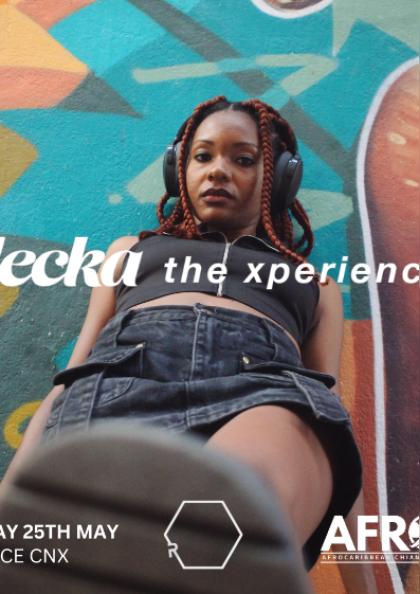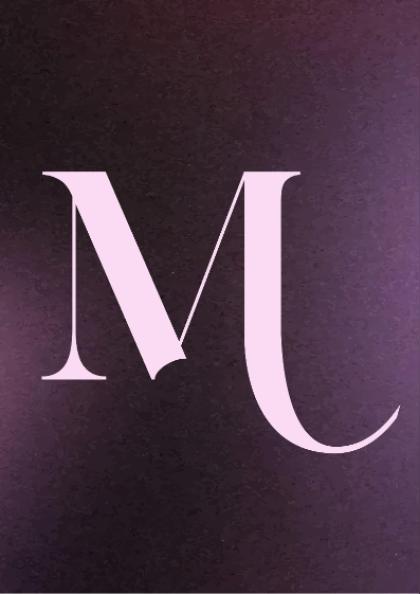Mastering the Art of Transparency: Unveiling Watercolor Wonders Through Tips and Techniques
Watercolor painting is a mesmerizing medium that captures the delicate interplay of colors, light, and shadow with an ethereal beauty unlike any other. Among its enchanting qualities, the magic of transparency stands out. In this article, we delve into the realm of watercolor wonders, uncovering the tips and techniques that allow artists to harness the captivating allure of transparency in their paintings.
Mastering the Art of Transparency: Unveiling Watercolor Wonders Through Tips and Techniques
Watercolor painting is a mesmerizing medium that captures the delicate interplay of colors, light, and shadow with an ethereal beauty unlike any other. Among its enchanting qualities, the magic of transparency stands out. In this article, we delve into the realm of watercolor wonders, uncovering the tips and techniques that allow artists to harness the captivating allure of transparency in their paintings.


The Allure of Transparency in Watercolors
Transparency is the heart of watercolor painting, allowing artists to layer colors and create luminous effects that mimic the play of light on various surfaces. This unique quality sets watercolors apart from other mediums, offering a realm of possibilities for creating depth, vibrancy, and visual intrigue.
Essential Tools and Materials
1. Quality Watercolor Paper: Begin with the foundation. Choose a high-quality watercolor paper that can handle the delicate nature of transparent layers without buckling or warping.
2. Paints and Pigments: Opt for professional-grade watercolor paints, as they tend to have higher pigment concentrations and offer better transparency and color vibrancy.
The Allure of Transparency in Watercolors
Transparency is the heart of watercolor painting, allowing artists to layer colors and create luminous effects that mimic the play of light on various surfaces. This unique quality sets watercolors apart from other mediums, offering a realm of possibilities for creating depth, vibrancy, and visual intrigue.
Essential Tools and Materials
1. Quality Watercolor Paper: Begin with the foundation. Choose a high-quality watercolor paper that can handle the delicate nature of transparent layers without buckling or warping.
2. Paints and Pigments: Opt for professional-grade watercolor paints, as they tend to have higher pigment concentrations and offer better transparency and color vibrancy.
3. Brushes: Invest in a variety of brushes, including round, flat, and mop brushes, to facilitate different techniques and effects.
4. Palette: Select a palette with ample mixing space to create your own color combinations. This ensures better control over the color harmony in your painting.
Mastering the Art of Layering
1. Gradual Build-Up: Begin with light washes and gradually layer more intense colors. Layering allows you to achieve the desired hue, intensity, and depth while maintaining transparency.
2. Preserve White Areas: Leave areas of the paper untouched to represent highlights. These white areas create contrast and enhance the illusion of transparency.
3. Glazing: Apply transparent layers of color over dried layers to achieve richer tones and intricate color variations. Glazing adds depth and luminosity to your painting.
Harnessing Color Theory for Transparency
1. Color Harmony: Understand color relationships to create harmonious and visually appealing paintings. Complementary colors, analogous colors, and color triads play a vital role in achieving transparency.
2. Underpainting: Begin with a subtle underpainting in a complementary color to your subject. This underpainting shines through subsequent layers, contributing to a sense of depth.
3. Mixing Transparent Pigments: Certain pigments have greater transparency than others. Familiarize yourself with pigments like Quinacridone, Phthalo, and Alizarin, which tend to create stunning transparent effects.
Embracing Wet-in-Wet Techniques
1. Wet-on-Wet Washes: Apply paint onto wet paper to allow colors to blend and flow freely. Wet-on-wet washes create soft, diffuse edges and subtle color transitions.
2. Wet-in-Wet Blending: Blend colors directly on the paper while they are still wet. This technique lets you seamlessly merge colors, producing graceful gradients and transitions.
3. Wet-in-Wet Detailing: Contrary to popular belief, wet-in-wet techniques can be employed for fine details. Control your brush strokes and utilize the wet surface to your advantage.
Capturing Luminosity and Light
1. Negative Painting: Create the illusion of transparency by painting around the subject, allowing the background to show through. This technique adds depth and complexity to your artwork.
2. Glazing for Highlights: Glaze a thin layer of lighter, transparent color over areas that need highlights. This preserves the luminosity of the paper while adding a glow to your painting.
3. Scumbling: Gently brush a light, transparent color over an area to create a diffused, luminous effect. This technique is particularly effective for capturing the play of light on surfaces.
Working with Water and Edges
1. Controlled Wetness: The amount of water you use affects transparency. For more transparent effects, use less water in your mixture to prevent excessive spreading.
2. Edge Techniques: Different edge qualities contribute to the transparency of a painting. Hard edges are often more opaque, while soft edges lend a sense of depth and subtlety.
3. Dry Brushing: Use a nearly dry brush to create textures and details. This technique allows the paper's texture to show through, enhancing the overall transparency.
Exploring Negative Space
1. Playing with Negative Space: Negative space, the area around the subject, is just as crucial as the subject itself. Manipulate negative space to enhance transparency and create visual interest.
2. Reserve and Lift: Preserve the white of the paper by using masking fluid or lifting paint with a clean brush or tissue. This technique adds luminosity and a sense of freshness.
3. Brushes: Invest in a variety of brushes, including round, flat, and mop brushes, to facilitate different techniques and effects.
4. Palette: Select a palette with ample mixing space to create your own color combinations. This ensures better control over the color harmony in your painting.
Mastering the Art of Layering
1. Gradual Build-Up: Begin with light washes and gradually layer more intense colors. Layering allows you to achieve the desired hue, intensity, and depth while maintaining transparency.
2. Preserve White Areas: Leave areas of the paper untouched to represent highlights. These white areas create contrast and enhance the illusion of transparency.
3. Glazing: Apply transparent layers of color over dried layers to achieve richer tones and intricate color variations. Glazing adds depth and luminosity to your painting.
Harnessing Color Theory for Transparency
1. Color Harmony: Understand color relationships to create harmonious and visually appealing paintings. Complementary colors, analogous colors, and color triads play a vital role in achieving transparency.
2. Underpainting: Begin with a subtle underpainting in a complementary color to your subject. This underpainting shines through subsequent layers, contributing to a sense of depth.
3. Mixing Transparent Pigments: Certain pigments have greater transparency than others. Familiarize yourself with pigments like Quinacridone, Phthalo, and Alizarin, which tend to create stunning transparent effects.
Embracing Wet-in-Wet Techniques
1. Wet-on-Wet Washes: Apply paint onto wet paper to allow colors to blend and flow freely. Wet-on-wet washes create soft, diffuse edges and subtle color transitions.
2. Wet-in-Wet Blending: Blend colors directly on the paper while they are still wet. This technique lets you seamlessly merge colors, producing graceful gradients and transitions.
3. Wet-in-Wet Detailing: Contrary to popular belief, wet-in-wet techniques can be employed for fine details. Control your brush strokes and utilize the wet surface to your advantage.
Capturing Luminosity and Light
1. Negative Painting: Create the illusion of transparency by painting around the subject, allowing the background to show through. This technique adds depth and complexity to your artwork.
2. Glazing for Highlights: Glaze a thin layer of lighter, transparent color over areas that need highlights. This preserves the luminosity of the paper while adding a glow to your painting.
3. Scumbling: Gently brush a light, transparent color over an area to create a diffused, luminous effect. This technique is particularly effective for capturing the play of light on surfaces.
Working with Water and Edges
1. Controlled Wetness: The amount of water you use affects transparency. For more transparent effects, use less water in your mixture to prevent excessive spreading.
2. Edge Techniques: Different edge qualities contribute to the transparency of a painting. Hard edges are often more opaque, while soft edges lend a sense of depth and subtlety.
3. Dry Brushing: Use a nearly dry brush to create textures and details. This technique allows the paper's texture to show through, enhancing the overall transparency.
Exploring Negative Space
1. Playing with Negative Space: Negative space, the area around the subject, is just as crucial as the subject itself. Manipulate negative space to enhance transparency and create visual interest.
2. Reserve and Lift: Preserve the white of the paper by using masking fluid or lifting paint with a clean brush or tissue. This technique adds luminosity and a sense of freshness.
3. Layered Negative Space: Build up layers of transparent color in the negative space to create depth and dimension. These layers add complexity to the overall composition.
Trial, Error, and Persistence
1. Embrace Experimentation: Transparency in watercolors often requires trial and error. Don't be afraid to experiment with different techniques and color combinations.
2. Learn from Mistakes: Mistakes are an integral part of the creative process. Analyze what went wrong, learn from it, and use that knowledge to refine your skills.
3. Persevere: Achieving transparent effects can be challenging, especially for beginners. Keep practicing, and over time, you'll develop an intuitive understanding of the medium.
3. Layered Negative Space: Build up layers of transparent color in the negative space to create depth and dimension. These layers add complexity to the overall composition.
Trial, Error, and Persistence
1. Embrace Experimentation: Transparency in watercolors often requires trial and error. Don't be afraid to experiment with different techniques and color combinations.
2. Learn from Mistakes: Mistakes are an integral part of the creative process. Analyze what went wrong, learn from it, and use that knowledge to refine your skills.
3. Persevere: Achieving transparent effects can be challenging, especially for beginners. Keep practicing, and over time, you'll develop an intuitive understanding of the medium.


Inspiration and Continued Learning
1. Study the Masters: Explore the works of renowned watercolor artists to gain insight into their techniques and use of transparency.
2. Workshops and Courses: Enroll in workshops or online courses to learn from experienced artists. Interactive learning environments can accelerate your growth.
3. Nature's Beauty: Draw inspiration from nature's transparency and luminosity. Observe how light filters through leaves, water, and glass, and apply these observations to your artwork.
Watercolor painting possesses a unique enchantment rooted in the delicate dance of transparency. As artists explore the intricacies of layering, color theory, wet-in-wet techniques, and more, they unravel a world of possibilities that capture the essence of light and shadow. By mastering these techniques, artists create watercolor wonders that evoke emotion, stir imagination, and elevate their creations to captivating realms of visual storytelling. The journey of embracing transparency in watercolors is one of discovery, artistry, and the joy of creating luminous masterpieces that breathe life into the canvas.
Inspiration and Continued Learning
1. Study the Masters: Explore the works of renowned watercolor artists to gain insight into their techniques and use of transparency.
2. Workshops and Courses: Enroll in workshops or online courses to learn from experienced artists. Interactive learning environments can accelerate your growth.
3. Nature's Beauty: Draw inspiration from nature's transparency and luminosity. Observe how light filters through leaves, water, and glass, and apply these observations to your artwork.
Watercolor painting possesses a unique enchantment rooted in the delicate dance of transparency. As artists explore the intricacies of layering, color theory, wet-in-wet techniques, and more, they unravel a world of possibilities that capture the essence of light and shadow. By mastering these techniques, artists create watercolor wonders that evoke emotion, stir imagination, and elevate their creations to captivating realms of visual storytelling. The journey of embracing transparency in watercolors is one of discovery, artistry, and the joy of creating luminous masterpieces that breathe life into the canvas.
































